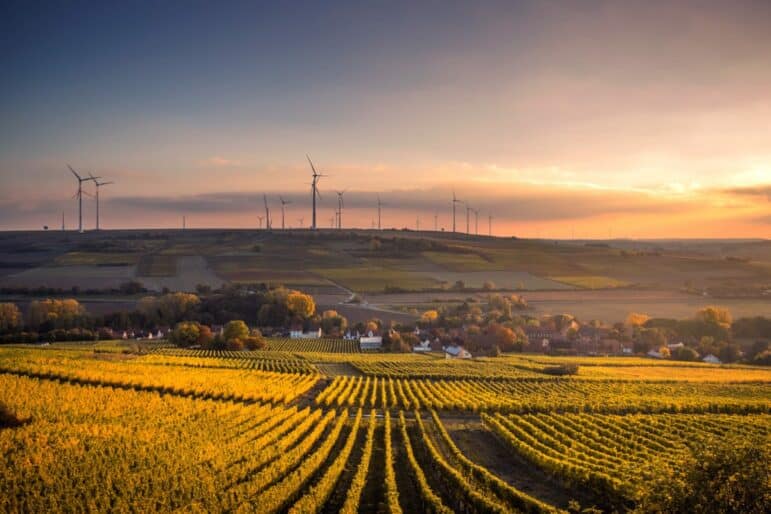
A Time for Change
The coronavirus pandemic should be understood as a dress rehearsal for climate change. The rapidity and breadth of its impact has been too much for our systems to bear. It’s put health care, social security, food systems, sanitation, and most everything else to the absolute test. Thus far food is still getting to the grocery stores and medical care continues to be given but the question remains for how long? If the pandemic continues assaulting the world for months on end can we trust that our supply chains will continue to hold steadfast? Our globalized world is absolutely dependent upon safe, efficient, and guaranteed shipping.
Depending on perspective, globalization and free trade are a gift. It created huge wealth across the globe, decreased costs associated with manufacturing and trade, and developed a model that maximizes efficiencies across the entirety of the global economy. Geographic regions around the world contribute to the creation of singular products, with favorites in separate companies making component parts for a whole product that is sold globally. It’s efficient, low cost, high revenue, and creates cheap replicable products that weed out competition.
Seen another way, the globalized model rooted out the ability for local development of goods and services, notably manufacturing and agriculture. It’s why there are food desserts, which should more appropriately be called food apartheid zones in cities surrounded by farmland. The majority of farmland around the world has been dedicated to monocropping staple crops that are then shipped globally rather than locally. For instance, half of the United States arable farmland is monocropped.
The global food chain of course allows there to be bananas in Wisconsin in the winter and wheat from the United States is sent to food starved areas across the world. But it also means that our food access is completely reliant on a complex exchange between nation states and private enterprises rather than local farmers and ranchers. If any links in the supply chain break then a global food crisis would be inevitable. We are not that far away. The United Nations has provided warning that food shortages may be imminent with food production facilities and farms losing workers to the disease.
What the coronavirus has demonstrated is that our system of global interdependence is not as stalwart as we would like or need it to be. South Korea is using the unfortunate opportunity provided by the coronavirus to push for greener economies and infrastructure. They see what needs to be done to encounter climate change and are working towards it. Some countries are going the other direction. China recently announced 34 gigawatts (GW) of new coal power — equivalent to Poland’s annual output — adding to the 147 GW it already produces annually from coal. The China Development Bank (CDB) and China Export-Import Bank (CHEXIM) — have also provided over $226 billion in loans to South East Asian countries — Vietnam, Indonesia, India, and the Philippines over the past two decades. It’s created a boom of renewed production and confidence in the fossil fuel sector while dealing a huge blow to conservation and environmental efforts, let alone the hope of hitting the Paris Climate Agreement targets.
Not only are these actions inane they are deeply immoral and make very little long-term economic sense. What does make sense is a re-evaluation of and a commitment to investment strategies that fund locally focused regenerative agriculture projects and renewable energy production. Regeneration International describes regenerative farming as: ”farming and grazing practices that, among other benefits, reverse climate change by rebuilding soil organic matter and restoring degraded soil biodiversity — resulting in both carbon drawdown and improving the water cycle.” At present, agriculture globally is responsible for nearly 30% of global emissions. Regenerative farming techniques, on the other hand, have the potential to to sequester upwards of two tons of carbon per hectare. Additionally, it is estimated locally focused regenerative farming has the ability to employ upwards of 32 people for every million dollars in production revenue creating a net-positive boon for local economies and mitigating climate change.
Despite a pledge to green their portfolios, the majority of MDBs continue to heavily resource fossil fuel infrastructure. This is true for other banks and crediting agencies. For instance, “from 2016–2018 Export Credit Agencies (ECAs) provided $31.6 billion annually to support fossil fuel projects” — $7.1 billion for coal and $24.5 billion for oil and gas. By comparison, ECAs only gave $2.7 billion per year for renewable energy. Common wisdom has held that investing in fossil fuels is a guaranteed money maker. This belief continues to hold even though half the coal plants in the world are projected to lose money in 2020. Furthermore, the coronavirus pandemic has plummeted oil to nearly $10 a barrel. Rather than bet on oil rebounding and investing heavily in it, let’s make moves in the other direction.There is no better time than now to transition away from fossil fuels. Renewable energy has a higher economic upside and the long term viability that fossil fuels do not. We need MDBs and ECAs to move their investments towards renewable energy and local economies. It will strengthen local resilience and create new energy and economic pathways that are not dependent on fossil fuel economies. This transition will be slow but it is necessary if we want to guarantee a future worth living into.
